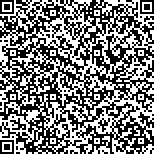| 摘要: |
| 基于清单分析法和排污系数法,对长江中下游城市群农业面源污染氮排放现状进行了评价,并运用灵敏度分析和情景分析方法,模拟和比较了不同调控方案对区域未来氮排放变化的影响。研究结果表明, 2011年长江中下游城市群4种污染源向水环境排放的氮总量共计128.27万t,其中,农业种植和畜禽养殖的排放比例分别为58.92%和33.53%,是该区农业面源污染的主要氮污染源。如果不加大对面源污染的治理力度, 2011~2020年和2020~2030年长江中下游城市群农业面源污染氮排放量将分别增加16.29%和18.78%; 如果采取相关减排措施, 2020年和2030年4个城市群的农业面源污染氮排放量将分别比2011年削减15%和25%,并有利于实现区域农村经济增长与环境健康发展的双重目标。建议今后全区农业面源污染氮排放调控的重点在于逐步削减肥料投入、合理优化用肥结构、控制畜禽养殖规模扩张以及促进专业化养殖畜禽废物循环利用等,主要控制地区包括武汉城市圈内的潜江市、孝感市、黄冈市和鄂州市,长株潭城市群内的长沙市和湘潭市,鄱阳湖生态经济区内的南昌市和鹰潭市,以及皖江城市带内的六安市和合肥市。 |
| 关键词: 农业面源污染 氮排放 调控 长江中下游城市群 |
| DOI:10.7621/cjarrp.1005-9121.20160801 |
| 分类号: |
| 基金项目: |
|
| ASSESSMENT AND CONTROL OF NITROGEN EMISSION FROM AGRICULTURAL NON-POINT SOURCE IN THE URBAN AGGLOMERATION IN THE MIDDLE-LOWER YANGTZE RIVER BELT |
|
Lai Min1, Wang Weili2, Guo Linghui3
|
|
1.School of Environment,Tsinghua University,Beijing 100084,China;2.Third Institute of Oceanography State Oceanic Administration,Xiamen Fujian 361005,China;3.The Research Centre of land Economy and Regional Sustainable Development of Henan Polytechnic University,Jiaozuo 454000,China
|
| Abstract: |
| Nitrogen is an important component of protein and essential element for the growth of aquatic biomass.Excessive nitrogen input to natural water bodies leads to huge ecological pressure and environmental pollutions such as eutrophication. As point source pollution got effective control in the socio-economic system, agricultural non-point source pollution has become the main cause of eutrophication. Quantifying and regulating the agricultural non-point source pollution emissions throughout the entire socio-economic system is crucial to mitigate or avoid producing water pollution. Based on the inventory analysis method and emission coefficient method, this paper calculated the nitrogen emission from the agricultural non-point source for the Urban Agglomeration in the Middle-Lower Yangtze River Belt. The results showed that the total nitrogen emission from the agricultural non-point source in the whole area was 128.27×104 t in 2011, of which agricultural emission accounted for 58.92%, and emission from livestock and poultry was 33.53%.The sensitivity analysis method and scenario analysis method were then applied to simulate the emission situation during 2011 to 2020 and 2020 to 2030. Some conclusions were drawn as follows: Under scenario 1, if more stringent pollution control efforts were not implemented, the nitrogen emission from the agricultural non-point source would increase 16.29% during 2011 to 2020, and 18.78% during 2020 to 2030. Under scenario 2 and scenario 3, by contrast, the total nitrogen emission of the four urban agglomerations would be 15% fewer in 2020 than in 2011, and 25% fewer in 2030 than in 2011. The nitrogen emission reduction effect in scenario 2 was better than that in scenario 3; Scenario 3 was considered to be more conducive to couple the relationship between regional economic growth and environmental protection. Finally, some recommendations were put forward to regional emission reduction, including reducing fertilizer input, optimizing fertilizer application structure, limiting the production of livestock and poultry, and promoting comprehensive utilization of livestock waste. The main control areas were Qianjiang City, Xiaogan City, Huanggang City and Ezhou City in Wuhan Metropolitan Area, Changsha City and Xiangtan City in Chang-Zhu-Tan Metropolitan Area, Nanchang City and Yingtan City in Poyang Lake Eco-economic Zone, as well as Luan City and Hefei City in Wanjiang City Belt. Wuhan Metropolitan Area should focus on reducing the total amount of fertilizer input, promoting biogas production of livestock waste. Chang-Zhu-Tan Metropolitan Area should reduce the amount of fertilizer, optimize fertilizer structure, and promote comprehensive utilization of livestock and poultry breeding waste in specialized cultivation. In Poyang Lake Eco-economic Zone, the overall pollution is relatively light, and the pollution prevention and control in this area relies mainly on pollution prevention while carrying on pollution abatement. Wanjiang City Belt should focus on reducing the excessive use of fertilizers. |
| Key words: agricultural non-point source pollution nitrogen emission emission control Urban Agglomeration in the Middle-Lower Yangtze River Belt |

